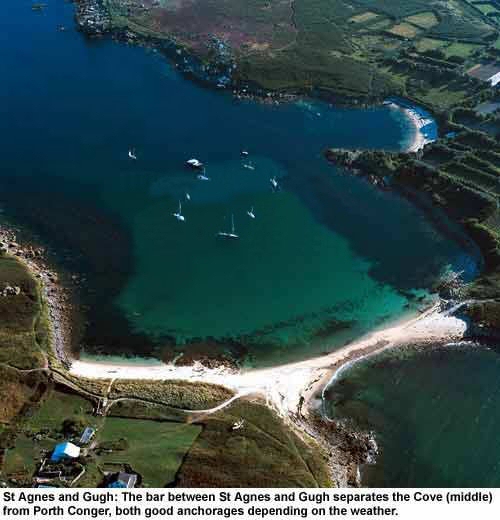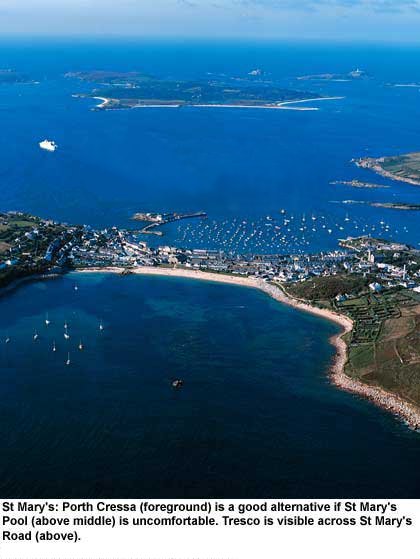We left Plymouth breakwater at 10.30 expecting to make the tidal gate at the Lizard around 21.30, but during the leg the wind slowly veered to SW pushing us towards Falmouth, eventually I started the engine and ploughed almost head to wind for the remaining 2 hours. I have 2 waypoints for the Lizard one close inshore incase we're late and against the current, the other 4 miles south. We arrived half an hour after the 3 hour gate but still proceeded south, and encountered an hour of rough water, the wind now W by S. This enabled setting sail on a NW by W tack into and across Mounts Bay where the current is less. Next time I might go in close to the headland if late but in failing light and a lee shore it was not an option this time.
The Tate a du light became visible around 01.00, a very comforting light that stays for several hours until south of Lands End. Porth Cressa and Wolf rock are due West of the Lizard but with the wind now seeming to hold W by S, we tacked SW by S to use the Northerly tide in the last 6 hours of our NW by W tack in our approach to the Isles of Scilly.
As Tate a du faded astern Wolf rock rises from the black sea always taking it's time to show, it marks the SE corner of the very busy shipping lane.
We tacked NW by W a mile south of Wolf and a convoy of south bound ships are a cause for concern, they are often quite close to each other but in a tight line. Holding our course and taking the bearings, keeping the sails trim to maintain speed, makes for a busy time. We usually have to duck close behind the stern of one in order to get through. As we make the run across if the visibility is poor I turn on the deck light to show the sails and our predicament to the approaching ship, often they have slowed or changed course slightly.
The VHF is usually busy with foreign ships masters being reminded by the Coastguard that the Maritime rules for Traffic Seperation Zones apply and that any change of course by the ship is a matter for the ships master to decide.

By 07.00 St Agnes was in sight, although the wind had veered now to the NW and we were SE by 5 miles. Tired but motivated with the prospect of dropping anchor, and with the reason of charging the battery we motorsail straight for Porth Cressa through a short choppy sea, across the now SW current.
The seabed in Porth Cressa is mainly sand, but being a popular anchorage it is well ploughed, so the holding is medioca at best, there are three subterrainian cables but the harbour master assures me they buried deep enough not to worry about. A good spot away from the swell is on the west side near the entrance. It's not an anchorage for winds from the East around to the South.
A sobering thought is that Pen Duick 1 was wrecked here on the rocks in the centre of the Porth during a Westerly gale after dragging her anchor. One evening after hearing some shouting and looking out to see a 38 footer carefully laying their anchor at spring high right on top of them, they must nearly have been aground, how the crew had not realised that they had only let go 2 meters of chain I don't know.
Just over a mile South is The Cove, protected from the South, west around to the North but open from the East. The holding here is good, it is again very popular, one needs good supplies onboard, there's a general store and PO where fresh bread can be ordered, water is scarce, but the Turks Head has good food and is one of Britain's finest.
Porth Conger is open to the west and north, sheltered from the swell but not the wind from the east and sheltered from both from the south. A good holding with patchy sand and rocks on the seabed. There isn't much room and the ferrys to St Agnes quay rolls the boat, but it's just a hop to the Turks Head.

